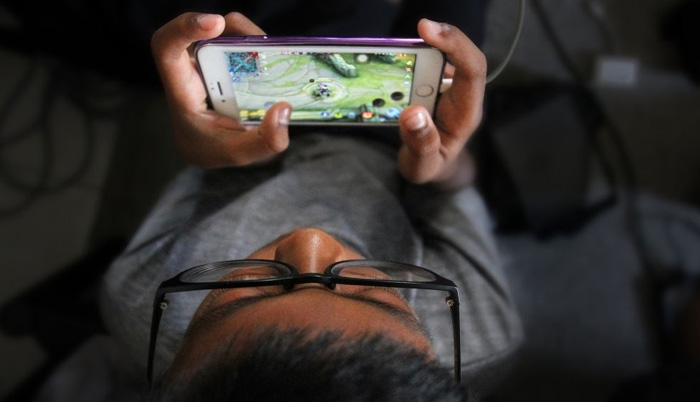![]() Home > Malaysia
Home > Malaysia
Growing Vision Problems

With time spent online having increased dramatically over the past two years, more children in the country are facing eyesight problems. Experts say parents should not turn a blind eye to what can be an epidemic of short-sightedness among the young.
![]() August 8th, 2022 | 11:24 AM |
August 8th, 2022 | 11:24 AM | ![]() 647 views
647 views
GEORGE TOWN
If your child has trouble making out objects from afar and has to squint, perhaps it is time for an eye check-up.
There might be a long queue, however: vision issues have become widespread among children, especially in the wake of the various movement control orders and school closures implemented to contain Covid-19.
All these led to schoolchildren making greater use of smartphones, tablets and computers for their online learning, which is likely to be main reason for their vision problem, according to a study.
Research published this year found that eight out of every 10 pupils tested at a rural Chinese primary school in Bentong suffered from vision problems, with about 60% of them being myopic (short-sighted) and 16% hyperopic (far-sighted).
The four scientists involved in the study said it was worrying that more rural children were being affected by vision problems.
The scientists said the data suggested that rural children in Chinese schools faced similar academic pressure as those in urban schools.
“Under Covid-19 pandemic conditions, teaching and learning is mostly conducted online. The learning environment is dependent on visual display units such as desktops and laptop computers or through portable devices such as mobile telephones.
“Different screen sizes of these devices make near-vision tasks a challenge, resulting in longer viewing times. This situation can cause fatigue to the visual system – previous studies showed that excessive near-vision tasks can accelerate the progression of myopia,” the scientists said in their report.
The research team, led by Prof Datuk Dr Rokiah Omar of Universiti Kebangsaan Malaysia, published their research earlier this year in Malaysian Family Physician, the journal of the Academy of Family Physicians of Malaysia and Family Medicine Specialists Association of Malaysia.
Two of the other scientists, May Ek Su Wong and Chiranjib Majumder, are also from UKM, and the fourth, Prof Lt Kol Dr Victor Feizal Knight, is attached with Universiti Pertahanan Nasional Malaysia.
Malaysian Society of Ophthalmology president Dr Manoharan Shunmugam said on a national scale, myopia prevalence among children at age seven was 9.8%, and this rose to 34.4% at the age of 15.
“Overwhelming evidence shows that sustained, intense near-vision work is significantly linked to the onset and progression of myopia in children.
“During the MCO’s long periods of indoor activity and gadget-use, children were especially prone to developing refractive errors,” he said in an interview.
Acknowledging that it was impossible to avoid the use of gadgets, Dr Manoharan advised parents to limit their children’s time spent on gadgets for entertainment, and to increase their outdoor activities and teach them good “eye habits” such as taking regular breaks.
The ophthalmologist and vitreoretinal surgeon said children would not usually complain of vision problems, or even be aware that they could not see well.
“If uncorrected within the first decade of life, it is likely that these children will have lifelong visual impairment of varying severity in one or both eyes in the form of amblyopia (lazy eyes).
“It is imperative that children are screened at regular intervals and that this initiative is adopted nationally,” he said.
In a study conducted in 2006 by a different set of researchers, only 54 out of 705 pupils (7.7%) in 10 national-type primary schools in Kota Baru had uncorrected visual impairment.
“The prevalence rate of myopia among ethnic Malays living in the suburban area of Kota Baru (5.4%) was lower than the Malay population in the metropolitan cities of Kuala Lumpur (9.2%) and Singapore (22.1%).
“The genetics of Malays in Kelantan, Kuala Lumpur and Singapore are similar. As such, differences in the prevalence rates were unlikely to be due to genetics and may be primarily environmental in nature,” the researchers stated in the study published in the Annals of the Academy of Medicine Singapore.
The researchers found that better educational levels, higher parental incomes, longer reading times (more than two hours daily), more vigorous educational systems and greater use of information technology greatly increased incidences of refractive errors in children.
They concluded that pupils with parents holding higher educational qualifications were also three times more likely to be short-sighted.
Source:
courtesy of THE STAR
by LO TERN CHERN
If you have any stories or news that you would like to share with the global online community, please feel free to share it with us by contacting us directly at [email protected]